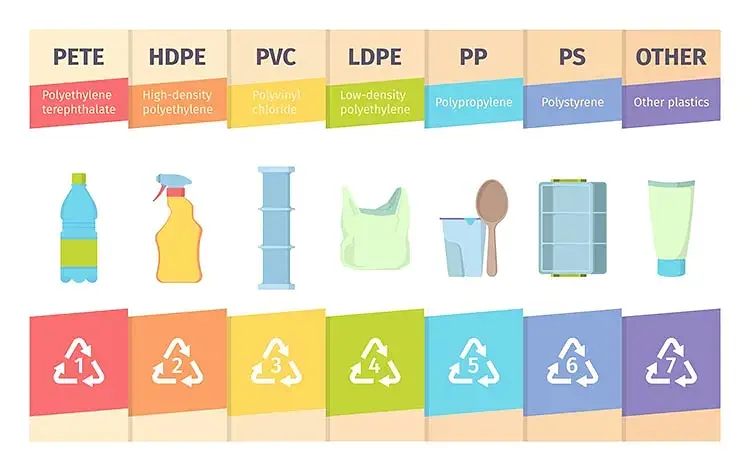Plastic recycling is a central issue in the circular economy and environmental sustainability. However, not all plastics are the same: some are recycled efficiently, while others pose significant challenges. In this article, we will analyse the most recycled plastics, the reasons for their widespread recycling and possible solutions to increase the sustainability of more complex plastics.
The most recycled plastics
- PET (Polyethylene Terephthalate)
Use: beverage bottles, food containers.
Why it is recycled: it is easily recognisable, has a high market value and can be recycled several times without losing too many properties.
End products: new bottles, textile fibres, packaging.
- HDPE (High-density polyethylene)
Use: detergent bottles, jerry cans, pipes.
Why it is recycled: it has a simple and stable structure and withstands washing cycles well.
End products: pipes, street furniture, rigid containers.
- PP (Polypropylene)
Use: caps, food containers, car components.
Growing interest in recycling: it is very versatile, but historically less recycled than PET/HDPE.
End products: crates, plastic furniture, industrial components.
Less recycled plastics: critical issues
- PVC (polyvinyl chloride): used in construction and piping, it is difficult to treat due to additives and toxic releases.
- PS (polystyrene): used in packaging and food trays, it has a low recovery value.
- Multi-layer and mixed plastics (e.g. Tetra Pak): very difficult to separate and recycle using traditional methods.
What can be done to improve the recycling of complex plastics?
- Eco-design: designing products from the outset to be recyclable, using single-component materials.
- Clear labelling: helping consumers and recyclers to distinguish between materials.
- Advanced separation technologies: plants that use artificial intelligence, infrared or optical sorting.
- Chemical recycling: currently under development, this allows plastic to be broken down into basic monomers even if contaminated.
Although PET and HDPE are the champions of recycling, it is essential to invest in technologies and solutions to extend recycling to even the most problematic plastics. Only in this way can we build a truly sustainable future, in which every type of plastic has a second life.
